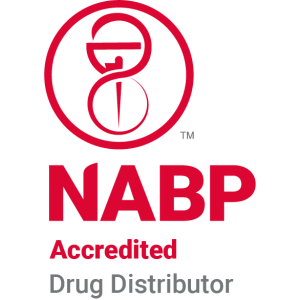GLP therapy for obesity treatment
Introduction to GLP-1 Therapies
In recent years, glucagon-like peptide-1 (GLP-1) receptor agonists have emerged as a groundbreaking treatment option for obesity management. Historically developed for type 2 diabetes, these medications have been repurposed and shown to deliver significant weight loss results in addition to their glucose-regulating capabilities. This article delves into the intricacies of GLP-1 therapies, exploring the mechanisms behind their success, efficacy in clinical trials, and their broader implications for obesity treatment.
Understanding GLP-1 Agonist Drugs

What are GLP-1 agonist drugs?
GLP-1 agonist drugs represent a class of medications designed initially for managing type 2 diabetes. They work by mimicking the effect of the natural hormone, glucagon-like peptide 1 (GLP-1). This hormone plays a crucial role in balancing blood sugar levels by stimulating insulin secretion and inhibiting glucagon, particularly after meals. Additionally, these drugs reduce appetite and help control food intake, making them effective for weight management.
Examples of GLP-1 drugs
Commonly prescribed GLP-1 medications include:
- Liraglutide
(available as Victoza and Saxenda)
- Approved for diabetes treatment in 2010 and for obesity in 2014.
- Aims to provide an average weight reduction of about 8%.
- Semaglutide
(available as Ozempic and Wegovy)
- Gained FDA approval for diabetes in 2017 and for obesity in 2021.
- Clinical trials indicate an impressive average weight loss of 14.9%.
- Tirzepatide
(Mounjaro)
- A dual receptor agonist approved for obesity management, showing weight loss of up to 20.9% in trials.
Role in diabetes and obesity management
While GLP-1 agonists are primarily known for their effectiveness in lowering blood sugar levels in type 2 diabetes patients, their ability to promote significant weight loss has made them a promising option for obesity treatment as well. Recent clinical trials have highlighted their potential to not only facilitate weight loss but also improve overall metabolic health, thereby reducing cardiovascular risk and other obesity-related complications. Reports indicate that participants can achieve sustainable weight loss, with some maintaining an average of 5% to 15% weight loss for over 12 months.
There are, however, nuances to their usage. Side effects such as nausea and gastrointestinal discomfort are common, raising considerations regarding long-term adherence and the need for regular medical consultation. Overall, GLP-1 receptor agonists offer a multifaceted approach to managing both diabetes and obesity, marking a significant advancement in therapeutic options for these prevalent conditions.
Qualification for GLP-1 Prescription in Obesity

How can someone qualify for a GLP-1 prescription for weight loss?
To qualify for a GLP-1 prescription targeting weight loss, individuals typically need to meet specific criteria regarding their body mass index (BMI). A BMI of 30 or higher is generally the threshold, indicating obesity. Alternatively, individuals with a BMI of 27 or higher who also have associated weight-related medical conditions, such as high blood pressure, high cholesterol, or type 2 diabetes, may also be eligible.
The FDA has approved three specific GLP-1 medications for weight management: Saxenda , Wegovy , and Zepbound . While Ozempic is primarily indicated for diabetes management, it is often prescribed off-label for weight loss. Patients can access these prescriptions via telehealth services or specific online pharmacies, although costs may be involved, such as a one-time onboarding fee.
Maintaining consistent communication with healthcare providers is essential. This helps manage potential side effects and make necessary medication adjustments. Patients using GLP-1 receptor agonists should also focus on a balanced diet , incorporating healthy snacks, as they may experience reduced hunger alongside gastrointestinal side effects.
Approved medications for weight loss
| Medication | Approval Year | Mechanism |
|---|---|---|
| Saxenda | 2014 | Decreases appetite |
| Wegovy | 2021 | Reduces hunger and promotes weight loss |
| Zepbound | Unknown | Specifics on action pending |
| Ozempic | 2021 | Primarily for diabetes, off-label usage available |
GLP-1 receptor agonists are a revolutionary class of drugs that not only assist in weight loss but also contribute to improved overall health outcomes. This makes them a promising option in the fight against obesity and its accompanying health risks.
The Mechanism of Action: How GLP-1 Agonists Work

Biological Mechanisms
GLP-1 receptor agonists (GLP-1 RAs) work by mimicking the effects of the naturally occurring hormone GLP-1, which is released in the gut in response to food intake. These medications activate GLP-1 receptors, triggering several physiological responses that promote weight loss. Key mechanisms of action include:
- Increased Satiety : By enhancing feelings of fullness, GLP-1 RAs help prevent overeating.
- Reduced Gastric Emptying : Slowing down how quickly food moves from the stomach to the intestine reduces hunger and keeps individuals feeling satisfied longer.
- Endocrine Effects : Stimulation of insulin secretion and inhibition of glucagon secretion improve glycemic control, which helps to regulate blood sugar levels.
Effects on Appetite and Insulin
The influence of GLP-1 RAs on appetite regulation and insulin secretion is significant. These medications not only promote weight loss but also positively affect metabolic health. For instance:
- Appetite Suppression : GLP-1 RAs directly affect the brain's appetite centers, reducing cravings and food intake.
- Insulin Release : They enhance insulin secretion primarily in a glucose-dependent manner, meaning insulin is released only when glucose levels are high, helping to prevent hypoglycemia.
- Glucagon Inhibition : By suppressing glucagon, GLP-1 RAs help reduce liver glucose output, further aiding weight loss efforts.
In essence, GLP-1 receptor agonists leverage complex biological pathways to foster weight loss and improve metabolic health, offering a comprehensive approach to obesity management.
Examining the Efficacy of GLP-1 Drugs for Weight Loss

Clinical Trial Outcomes
GLP-1 receptor agonists have emerged as front-runners in modern obesity treatment, thanks to their robust clinical trial results. Semaglutide
and Tirzepatide
stand out for their significant effect on weight reduction. In trials, semaglutide administered weekly at a dose of 2.4 mg demonstrated an average weight loss of approximately 14.9%, while participants using tirzepatide showed remarkable reductions of up to 22.5%.
These results reveal that patients frequently lose 5% to 20% of their body weight over a multi-month period without experiencing the often-seen yo-yo effects of traditional dieting methods.
Comparative Efficacy
Among the available GLP-1 agonists, the efficacy varies. Tirzepatide and Semaglutide are the most effective for weight loss, largely propelling beyond the results of liraglutide and dulaglutide. Here’s a quick comparison:
| GLP-1 Agonist | Average Weight Loss | Dosage | Year of FDA Approval |
|---|---|---|---|
| Semaglutide | 14.9% | 2.4 mg/week | 2021 |
| Tirzepatide | Up to 22.5% | Variable | 2022 |
| Liraglutide | 8-10% | 3 mg/daily | 2014 |
| Dulaglutide | Moderate effect | Variable | 2014 |
All GLP-1 agonists promote weight loss primarily by decreasing appetite and delaying gastric emptying, which enables patients to consume fewer calories. However, patient responses can often vary due to genetics, lifestyle, and adherence to treatment. While side effects like nausea are common, GLP-1 drugs often lead to improvements in associated health markers such as blood pressure and cholesterol levels, enhancing their appeal as multi-functional treatment options. Overall, they not only address weight management but also confer cardiovascular advantages, positioning GLP-1 receptor agonists as a compelling choice for those struggling with obesity.
Safety Profiles and Side Effects of GLP-1 Therapies

Common Side Effects
GLP-1 receptor agonists are generally well-tolerated, yet they are associated with several common side effects. These often include:
- Gastrointestinal issues : Nausea, vomiting, diarrhea, and constipation are prevalent, especially at the start of treatment. Up to 50% of patients may experience these symptoms.
- Headaches : Some users report experiencing headaches during the treatment period.
- Fatigue : Feelings of fatigue or tiredness can occur, potentially relating to adjustments in body metabolism.
These side effects may subside as treatment continues, but they do raise concerns for patients starting on GLP-1 therapy.
Long-term Safety Concerns
The long-term safety of GLP-1 receptor agonists remains a topic of ongoing research. Potential long-term side effects include:
- Pancreatitis risk : There is an ongoing discussion about the possibility of increased risk for pancreatitis. Although studies have not definitively established a causal link, vigilance is advised.
- Pancreatic cancer : The FDA has issued warnings regarding an elevated risk of medullary thyroid cancer linked to GLP-1 medications, especially in those with a familial predisposition.
- Skin effects : Rapid weight loss can lead to cosmetic concerns known as "Ozempic face," which is characterized by sagging skin and wrinkles due to the swift changes in body composition.
While GLP-1 therapies are effective in managing obesity and glycemic levels, healthcare providers recommend a cautious approach due to these uncertainties regarding long-term effects. Understanding patient health contexts and monitoring side effects carefully is essential for those undergoing treatment.
GLP-1 for Non-Diabetic Weight Loss
Can GLP-1 drugs be used for weight loss in non-diabetic individuals?
Yes, GLP-1 receptor agonists are an effective option for weight loss in non-diabetic individuals. Clinical studies highlight the success of these medications, with semaglutide, for instance, resulting in significant weight loss. Participants using this drug achieved an average weight decrease of approximately 5.3 kg, with many experiencing a ≥10% reduction in body weight compared to placebo groups.
Despite these positive outcomes, the use of GLP-1 receptor agonists may lead to side effects, particularly gastrointestinal issues such as nausea and bloating. Thus, healthcare providers need to evaluate individual preferences and potential risks before prescribing these medications.
What trends and clinical results are linked to GLP-1 use in non-diabetics?
The trend towards prescribing GLP-1 agonists for non-diabetic weight management has surged in recent years. Between 2019 and 2022, prescriptions for GLP-1 medications skyrocketed by an astounding 2,082%. This increased demand has, however, led to supply shortages, impacting diabetic patients who rely on these medications for glycemic control.
In clinical trials, pivotal findings indicate that the average weight loss ranges from 5% to 20% when GLP-1 agonists like semaglutide and tirzepatide are administered. These results underscore the significant impact of GLP-1 drugs in managing obesity even among those not suffering from diabetes. As awareness grows, ongoing discussions about the long-term safety, including the risk of side effects, are critical to facilitating informed, balanced treatment plans for patients seeking weight loss.
Cultural and Social Implications of GLP-1 Therapies
Impact on Societal Views on Obesity
The advent of GLP-1 receptor agonists like semaglutide and liraglutide signifies a shift in how society perceives obesity, recognizing it not merely as a personal failure but as a chronic disease requiring medical intervention. This changing narrative fosters a more compassionate view toward those struggling with obesity, reinforcing that effective treatments now exist to combat this condition. As GLP-1 therapies become increasingly successful, they help embed the understanding that obesity management is complex and multifactorial, involving biological, behavioral, and environmental elements.
Accessibility and Acceptance
Despite the growing acceptance of GLP-1 therapies, challenges to accessibility remain. High costs are a significant barrier to obtaining these medications for many individuals. Although prescriptions for GLP-1 medications surged over 2,000% from 2019 to 2022, only about 4% of eligible U.S. adults are prescribed these treatments due to insurance issues and costs. Additionally, weight-based marginalization can further affect acceptance in clinical settings. While the long-term benefits of GLP-1 therapies are clear—encompassing weight management and reduced risks of comorbidities—there is still work to be done to ensure equitable access and public education.
| Topic | Insights | Actions Needed |
|---|---|---|
| Societal Views on Obesity | Shift towards recognizing obesity as a chronic disease needing medical attention. | Enhance public awareness campaigns. |
| Accessibility | High costs and insurance barriers limit access to GLP-1 therapies. | Advocate for better insurance coverage. |
| Acceptance | Growing acceptance among healthcare providers; however, concerns about stigma and marginalization persist. | Implement training for healthcare providers. |
Potential Cost and Access Challenges
How much does GLP-1 medication for weight loss cost?
The cost of GLP-1 medications for weight loss varies significantly, ranging from about $165 to $2,000 per month. Brand names like Ozempic and Wegovy are notably more expensive, typically costing around $1,000 to $1,349 per month, with Wegovy being specifically FDA-approved for weight loss.
Unfortunately, obtaining coverage can be a challenge as most insurance plans do not cover these medications unless specific health conditions are met, such as a defined Body Mass Index (BMI) threshold. For those seeking alternatives, compounded versions of semaglutide and tirzepatide may start at lower prices and could be more affordable than standard prescriptions, although these compounded drugs are generally not FDA-approved .
Insurance coverage considerations
Insurance coverage for GLP-1 medications is an essential aspect affecting access. Patients often find that they must meet rigorous criteria to qualify for coverage. Additionally, certain health plans may categorize these medications as specialty drugs, which could lead to higher out-of-pocket expenses. It's crucial for individuals to consult with their healthcare providers and insurance companies to understand what options are available.
Moreover, there are discount programs offered by manufacturers that can significantly reduce these medications' costs—potentially alleviating some financial burdens for those needing treatment. For detailed pricing and assistance, it is advisable to check with several sources for discount programs that can aid in affording these therapies.
Innovations in GLP-1 Drug Delivery
Are there oral GLP-1 drugs available for weight loss?
Currently, there are no approved oral GLP-1 drugs specifically intended for weight loss. However, the oral formulation of semaglutide, marketed as Rybelsus, is primarily prescribed for managing Type 2 diabetes but does show potential for aiding in weight loss. The injectable GLP-1 agonists, such as liraglutide (Saxenda) and semaglutide (Ozempic/Wegovy), continue to demonstrate significant efficacy in weight reduction.
Emerging developments in GLP-1 medications
The pharmaceutical landscape continues to evolve with ongoing research into oral GLP-1 formulations, which may broaden options for patients. Recent studies indicate that we could see new oral formulations launched by 2027. These innovations aim to enhance patient adherence and convenience, addressing barriers associated with injectable therapies.
Below is a summary of the current GLP-1 delivery options and upcoming innovations:
| Formulation | Current Use | Expected Innovations |
|---|---|---|
| Injectable (e.g., Saxenda) | Effective for weight loss | Ongoing research for more options |
| Oral (e.g., Rybelsus) | Primarily for diabetes | Potential weight-loss indications by 2027 |
As research on novel formulations unfolds, patients may gain more effective alternatives for weight management, improving treatment outcomes without the inconvenience of injectables.
Historical Perspective and Future Directions in GLP-1 Research
Discovery and Development Milestones
The landscape of obesity treatment has been transformed by the discovery of GLP-1 (glucagon-like peptide-1) therapy. Initially identified by researchers Joel Habener and Svetlana Mojsov, GLP-1's potential led to the development of related drugs targeting weight management. The first GLP-1 receptor agonist, liraglutide, gained FDA approval in 2010 for diabetes and later in 2014 for obesity under the brand Saxenda. This marked a significant breakthrough by showing an average weight reduction of up to 8%.
Semaglutide followed, receiving approval in 2021, demonstrating even superior results; studies showed participants lost an average of 15% of their body weight. These medications initially intended for type 2 diabetes began to emerge as vital tools in obesity management.
Future Research Trends
The future of GLP-1 therapies seems promising. Current trends indicate ongoing research into dual-action medications, like tirzepatide, which combines GLP-1 with GIP (gastric inhibitory polypeptide), yielding more significant weight reductions (up to 20.9%). Such innovations may offer new avenues for treating obesity.
Additionally, studies are exploring the combination of GLP-1 with other hormones to enhance therapeutic effects. As the understanding of GLP-1's multi-faceted roles in appetite regulation and metabolic health evolves, future research is expected to focus on optimizing these treatments for sustained weight loss and broader health improvements.
As metabolic health remains a pressing concern, the continued refinement and innovative approaches in GLP-1 therapy could revolutionize obesity management, highlighting the necessity for extensive research in this expanding field.
Real-world Application and Patient Experience
Adherence Rates
Adherence to GLP-1 receptor agonist therapy remains a significant challenge. Data indicate that among obese individuals, the persistence rate with GLP-1 therapy at 180 days is around 46.3%, and only 32.3% remain adherent after one year. This low adherence rate raises concerns since clinical trials report much higher persistence rates, exceeding 85%. These discrepancies suggest that while GLP-1 medications are effective in clinical settings, real-world adherence is notably lower.
| GLP-1 Product | 1-Year Persistence Rate | Mean Proportion of Days Covered (PDC) |
|---|---|---|
| Semaglutide | 47.1% | 63.1% |
| Liraglutide | 19.2% | 40.8% |
Patient Counseling Strategies
Effective counseling is crucial for enhancing patient adherence to GLP-1 therapies. Healthcare providers are encouraged to discuss expected outcomes, common side effects, and the role of lifestyle modifications in conjunction with medication. Addressing patients’ motivations and barriers to weight loss can also improve persistence. As obesity is a chronic disease requiring continuous management, integrating diet and physical activity alongside GLP-1 therapy is essential for sustaining weight loss and improving overall health.
Combining Lifestyle and GLP-1 Therapies for Optimal Outcomes
Role of lifestyle modification
Effective management of obesity is not solely reliant on medications like GLP-1 receptor agonists; lifestyle changes play a crucial role. Engaging in regular physical activity and adopting a healthy diet can enhance the weight loss achieved through GLP-1 therapies.
In fact, studies indicate that participants who combine these medications with lifestyle modifications see greater improvements in overall health and weight management than those relying on medications alone. This synergistic approach not only assists in achieving substantial weight loss but also helps maintain this weight over the long term.
Long-term treatment strategies
Adopting GLP-1 receptor agonists for chronic weight management requires sustained commitment. Obesity is a chronic disease, and patients are encouraged to view weight loss as an ongoing journey rather than a short-term goal.
For enduring results, employing a lifestyle integration strategy that includes ongoing dietary education, regular exercise, and continuous monitoring can help optimize the efficacy of GLP-1 therapies.
Effective counseling from healthcare providers regarding the expectations and potential challenges patients may encounter is also vital to aid in adherence to long-term treatment plans.
Combining lifestyle modifications with GLP-1 therapies ultimately offers a comprehensive framework necessary for sustainable weight management and improvement in associated health outcomes.
Addressing Concerns of Overuse and Regulation
Off-label Use and Regulation
The rise in popularity of GLP-1 receptor agonists (RAs) for weight management raises significant concerns regarding their off-label use. Originally approved for type 2 diabetes treatment, these medications have gained traction as effective options for obesity treatment. However, their availability is tightly regulated, requiring prescriptions from healthcare providers. This regulation is crucial to ensure patient safety and efficacy through medically supervised use.
Currently, medications such as Ozempic, Saxenda, Wegovy, and Zepbound are not available over the counter. These drugs undergo extensive clinical trials to determine both their safety and effectiveness. The rigorous process aims to prevent misuse and safeguard public health, as unregulated access could lead to potential overuse, side effects, or health complications.
On the other hand, the introduction of supplements like Kourtney Kardashian's GLP-1 Daily, which claims to provide similar effects and is available OTC, poses additional challenges. Made from plant extracts, this supplement does not undergo FDA approval, creating a gap in clinical evidence for weight loss efficacy compared to prescription GLP-1 drugs. Hence, consumers should approach such products with caution, given the absence of rigorous testing.
Public Health Implications
As GLP-1 RAs become more popular, healthcare providers must encourage appropriate use, educating patients on the significance of following prescribed treatment plans. While these medications can substantially support weight loss and improve health outcomes, public awareness regarding their intended use is vital. Access to accurate information about prescription medications versus unregulated supplements is necessary to mitigate the risks of counterfeit products.
In summary, while GLP-1 receptor agonists remain a powerful tool for managing obesity and related comorbidities, their regulation is essential to maintain their integrity and safety in medical practice.
Concluding Thoughts on GLP-1 Therapies
The evolution of GLP-1 receptor agonists from diabetes management to becoming a cornerstone in obesity treatment represents a significant advancement in medical therapeutics. While challenges like cost and accessibility persist, their efficacy in weight management and associated health benefits offer promising solutions for tackling obesity. Ongoing research and development aim to expand their use, increase accessibility, and enhance formulation to improve patient adherence and outcomes, marking a hopeful future for those affected by obesity.
References
- GLP−1 receptor agonists for the treatment of obesity: Role as a ...
- Emerging Role of GLP-1 Agonists in Obesity - PubMed Central
- Prescribing GLP-1 Agonists for Weight Loss - AAFP
- What is the pipeline for future medications for obesity? - Nature
- Glucagon-Like Peptide-1 Based Therapies: A New Horizon in ...
- Anti-obesity drugs are closing the gap between dieting and bariatric ...
- Research shows GLP-1 drugs are effective but complex
- GLP-1 medications and weight loss: Helping patients navigate ...













